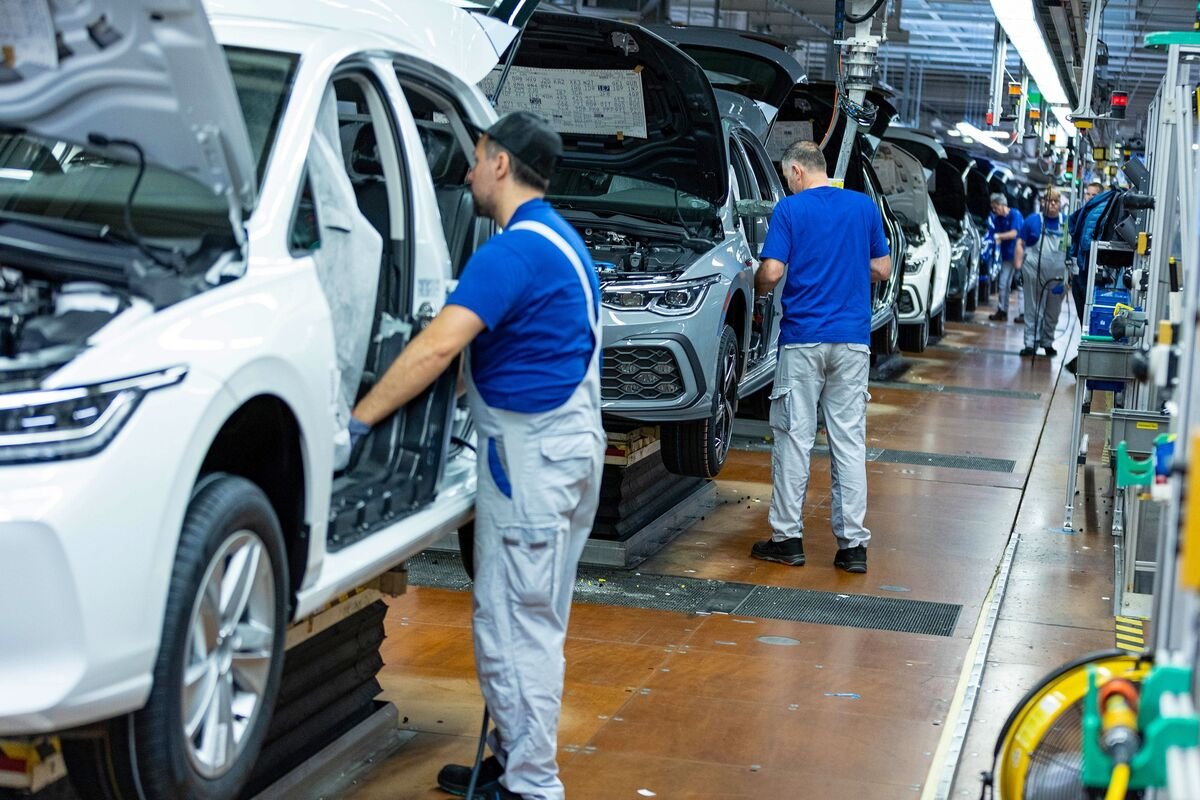You’re driving down the highway in your new electric car, feeling good about reducing your carbon footprint and saving money on gas. But those feel-good vibes hit a speed bump when you remember the latest news: those affordable Chinese EVs just got more expensive in Europe. Yup, new tariffs from the EU are hiking up costs by over a third on some models.
What gives? Turns out it’s not just about trade wars and protectionism. The EU investigated Chinese EV subsidies and found some unfair advantages that threatened European automakers. But the tariffs will also make it tougher for Europeans to afford EVs. And with climate change on the line, this battle between superpowers over car prices has everyone wondering: Who will back down first?
EU Imposes New Tariffs on Chinese Electric Vehicles
Steep Tariffs Mean Higher Prices
The EU has approved tariffs of up to 38.1% on electric vehicles imported from China, a move that will likely drive up prices for European consumers. The tariffs are aimed at curbing what the EU considers unfair trading practices by China that disadvantage European automakers. However, the new levies are all but certain to be passed on to buyers of popular EV models in the form of higher sticker prices.
European Automakers Caught in the Middle
European automakers like Volkswagen and BMW, which have major manufacturing operations in China, had lobbied against the steeper tariffs. They now face the unenviable choice of either absorbing the higher costs or raising prices for models like the Volkswagen ID series and BMW iX3. Most industry experts expect automakers will have little choice but to opt for the latter, despite the risk of denting sales.
An Escalating Trade Conflict
The new tariffs are the latest salvo in a trade war between the EU and China that has been simmering for years. The EU opened an investigation in 2019 into whether Chinese EV makers have received unfair government subsidies, concluding last year that they have. China is likely to retaliate with its own penalties on European goods, continuing a cycle of tit-for-tat trade actions that benefits no one. All sides would be better served by negotiation and compromise rather than escalation. But with political pressures high in both Beijing and Brussels, a quick resolution seems unlikely.
The Road Ahead
While European consumers will feel the immediate impact of higher EV prices, the longer-term implications are less clear. On the one hand, the tariffs could spur European automakers to accelerate development of affordable homegrown EV models to better compete with Chinese rivals. They may also encourage Chinese makers to shift more production to Europe to avoid tariffs. However, an escalating trade war poses major risks to the global economy that could ultimately outweigh any benefits. For now, the road ahead looks bumpy.
Impact of Tariffs on Prices of Chinese EVs in Europe
With the new tariffs, Chinese EVs just got more expensive for European buyers. A 17.1% tariff can increase the price of a €30,000 Chinese EV by €5,250. And that’s in addition to the 10% tariff already in place, bringing total tariffs on Chinese-made EVs up to 48% in Europe.
Higher Prices Mean Lower Sales
Higher prices typically mean lower sales, and these tariffs are no exception. European customers who were considering an affordable Chinese EV may find the increased cost puts the vehicle out of their price range. This could significantly impact the sales of Chinese automakers like BYD, SAIC and Great Wall Motors, who were poised to gain significant market share in Europe’s growing EV segment.
Tariffs Benefit European Automakers
While bad news for Chinese companies and European consumers, the tariffs are a win for European automakers. They provide an opportunity for brands like Volkswagen, BMW and Daimler to gain a competitive advantage by keeping their EVs affordably priced in comparison. The tariffs also support the EU’s goal to boost domestic manufacturing.
Trade Tensions Rising
The new duties threaten to escalate ongoing trade tensions between the EU and China. Beijing is likely to see the move as an attack on its most innovative companies and may retaliate with tariffs of its own on European goods. There are concerns this could spiral into a trade war that damages economic growth on both sides. However, others argue the tariffs are justified to counter unfair subsidies that give Chinese companies an advantage.
The Outlook
The future remains unclear. Much depends on how aggressively China responds and whether negotiations can lead to a resolution. In the meantime, Chinese EV makers will be looking for ways to mitigate the impact, perhaps by manufacturing more vehicles within Europe to avoid tariffs or dropping prices to stay competitive. European consumers can only hope any trade dispute is resolved before they end up paying the price.
Responses From Automakers and Governments
The announcement of the new EU tariffs on Chinese EVs sent shockwaves through the global auto industry. Automakers expressed concerns over how the policy might impact their business. ###VW and Mercedes, two of Germany’s largest car companies, warned the tariffs could negatively affect European automakers by raising costs and reducing choice for consumers. They argued that affordable Chinese EVs have helped accelerate the transition to sustainable transport in Europe.
The Chinese government criticized the EU’s decision and cautioned that retaliatory tariffs were likely. China’s Ministry of Commerce said the new duties were “against WTO rules” and that they “distorted international trade.” Analysts expect China may target European auto parts and other high-tech exports in response.
While the tariffs aim to curb unfair competition from subsidized Chinese companies, they also risk inflaming trade tensions with China – the EU’s second-largest trading partner. The EU policy risks a “tit-for-tat” trade war that could harm automakers and consumers on both sides. However, the tariffs’ impact may be contained if negotiators can reach a compromise. Some experts suggest the duties could motivate Chinese companies to increase manufacturing in Europe to avoid penalties, benefitting the regional economy.
The wide range of tariffs, from 21% up to 38.1%, reflected the degree to which investigators found Chinese companies cooperated. Firms that failed to provide data saw the highest penalties. The policy aims to remedy damage to the European EV industry from artificially low Chinese pricing. However, affordable EVs also support the EU’s climate goals, so policymakers must strike a balance.
With many interests at stake, the EU’s tariff decision promises to shape the future of e-mobility in Europe and the trading partnership between Brussels and Beijing. Automakers, governments and consumers worldwide will be monitoring how the situation unfolds in the coming months.
Long-Term Outlook for Chinese EV Exports to Europe
New Tariffs Add Cost but Won’t Stop Growth
The new EU tariffs on Chinese EVs, ranging from 10-38%, will undoubtedly raise prices for European consumers and slow the rapid growth in imports from China. However, Chinese EV makers have become adept at absorbing extra costs to gain market share. They can also shift more production to Europe to avoid tariffs, as some already have.
Over the next few years, expect Chinese EV exports to Europe to continue their upward trend, even with tariffs. Demand for affordable EVs is high, and Chinese brands dominate the lower-cost segment. They offer EVs priced 30-50% less than European and American competitors. For budget-conscious buyers, that price difference outweighs concerns over tariffs or brand perception.
Partnerships and Localization: Keys to Long Term Success
The keys to sustained success for Chinese EV makers in Europe are partnerships and localization. Partnerships with European brands, like the one between SAIC and Citroen, help Chinese companies gain credibility and distribution networks. Localizing production in Europe, as BYD and Nio have done, allows Chinese brands to bypass tariffs while still leveraging their cost advantages.
Over time, Chinese companies that establish strong European partnerships and localize more of their operations will gain the largest market shares. Those that rely primarily on exports from China will struggle if tariffs continue to rise. The companies poised for the most success, like SAIC and BYD, are already making moves to strengthen their European presence through partnerships, manufacturing investments and brand-building.
Consumers Ultimately in Control
No matter the geopolitical tensions or trade policies in place, European consumers will have the final say on the success of Chinese EVs. If Chinese brands continue improving in terms of quality, design, and brand image, more and more Europeans will likely opt for their affordable and eco-friendly vehicles. On the other hand, if Chinese EVs fail to shed their reputation for being cheap and unreliable, growth will stall.
Over the next decade, expect the European EV market to become a key battleground between Chinese and Western companies. The winners will be determined by who offers the best, most affordable EVs for the European consumer. For now, Chinese brands appear well-positioned, but they must keep working to build trust and loyalty to cement their long term success.
FAQs on EU Tariffs on Chinese Electric Vehicles
As an EV enthusiast or someone considering an electric vehicle, the new EU tariffs likely leave you with some questions. Here are some of the most common FAQs regarding these new levies on Chinese EVs.
Why did the EU impose these tariffs?
The EU claimed that Chinese automakers received unfair government subsidies, allowing them to sell EVs at artificially low prices. The bloc argued this distorted the European market and harmed domestic manufacturers. After a year-long investigation, the EU concluded tariffs were necessary to level the playing field.
How much are the tariffs?
The EU will slap additional tariffs of up to 38.5% on electric vehicles shipped from China, depending on the model. The levies aim to offset the unfair subsidies and bring Chinese EV prices in line with market rates. The tariffs will make many popular, affordable EV models from brands like Xpeng, NIO, and BYD more expensive for European consumers.
When will the tariffs take effect?
The EU’s tariffs on Chinese EVs are set to take effect starting July 4, 2024. Any vehicles that have already been shipped to Europe before this date will not face the new duties. However, EVs that arrive after July 4 will be subject to the tariffs, regardless of when the vehicle was purchased or ordered.
Will this start a trade war?
The tariffs escalate trade tensions with China and could provoke retaliation. Beijing has the right to file a complaint with the World Trade Organization over what it may see as unfair EU trade practices. The EU hopes negotiations can avoid a full-blown trade war, but China may impose counter-tariffs on European goods if talks fail. German automakers, who sought to avoid tariffs, could be especially vulnerable.
How will this impact the EV market?
While the tariffs aim to protect EU automakers, they will likely slow the bloc’s transition to EVs by making some models less affordable. Consumers may face higher prices and fewer options. However, domestic and other foreign automakers could gain a competitive edge if they ramp up production of cheaper EVs to fill the gap. The tariffs’ impact will depend on how automakers and consumers respond in the coming months.
Conclusion
And there you have it, folks. The EU just slapped tariffs on Chinese EVs that’ll make ’em more expensive for you and me. Sure, they say it’s to “level the playing field,” but we all know it’s just politics.
Now we’re left waiting to see if China retaliates. Let’s hope cooler heads prevail, because the last thing we need is a trade war. At the end of the day, we just want affordable EVs that don’t cook the planet. Is that too much to ask?
Guess we’ll have to sit tight and see how this shakes out. One thing’s for sure though – the ripples from these new tariffs will be felt far and wide. Buckle up, it’s gonna be a bumpy ride.






















